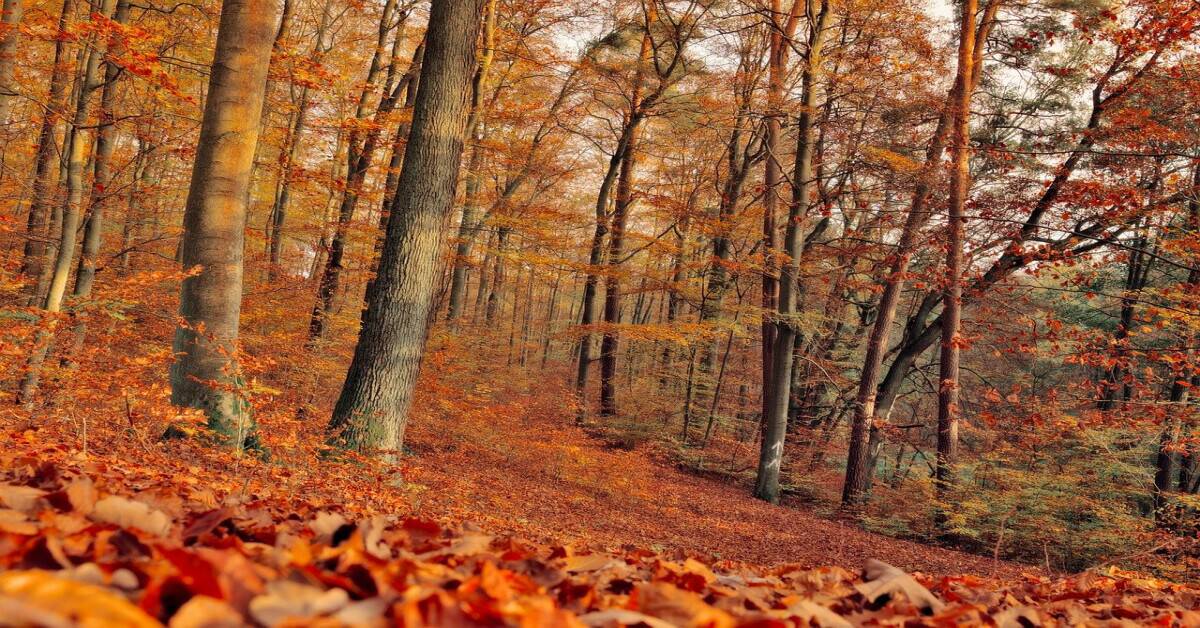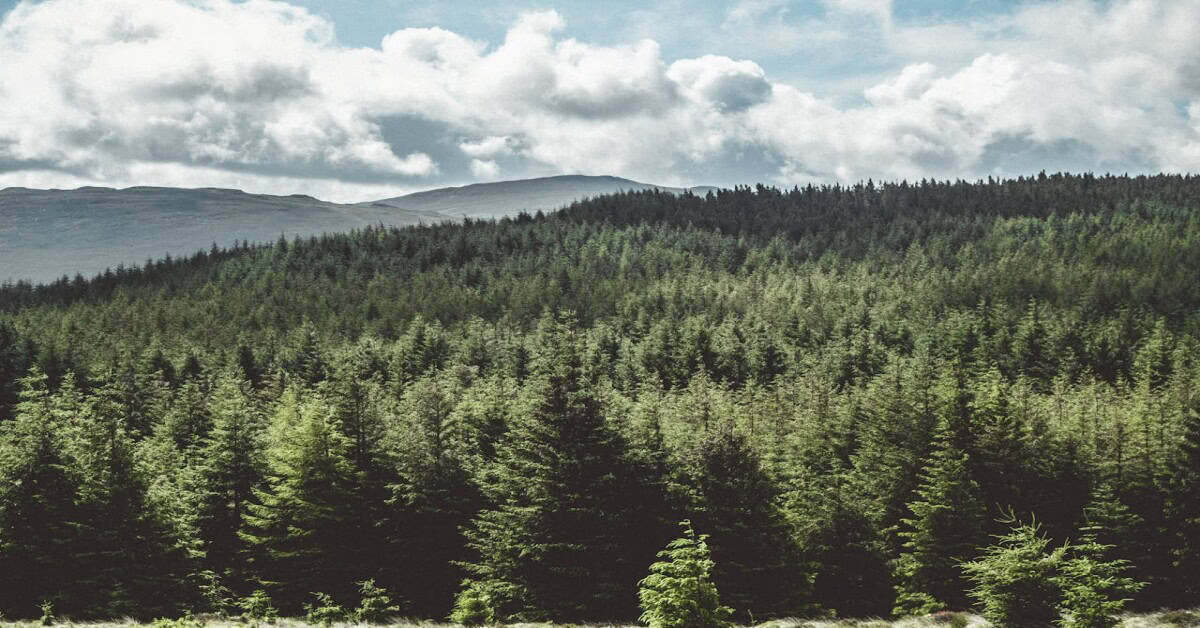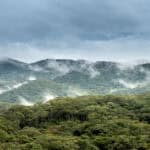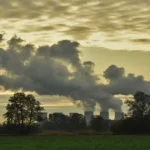Understanding tropical evergreen and deciduous forest distinctions is crucial for appreciating the diversity of our planet’s ecosystems. These forest types, though often confused, have unique characteristics that set them apart.
Tropical evergreen forests are lush and green year-round, while deciduous forests shed their leaves annually.
This fundamental difference affects the flora and fauna found in each type of forest. Understanding these variations is important for conservation efforts and biodiversity studies.
Forests play a key role in the global environment, influencing climate and supporting wildlife. By distinguishing between tropical evergreen and deciduous forests, we can better appreciate their unique contributions.
This knowledge aids in promoting sustainable practices and preserving these ecosystems for future generations.
What are Tropical Evergreen Forests?
Tropical evergreen forests are dense forests that remain green throughout the year. They are characterized by their tall trees with broad leaves that form a thick canopy.
These forests do not experience a dry season, which allows for continuous growth and lush vegetation. The consistent climate supports a high level of biodiversity.
These forests are mainly found in regions near the equator. Significant areas include the Amazon Basin in South America, the Congo Basin in Africa, and Southeast Asia.
Smaller patches are also found in Central America and the Pacific Islands. These locations all have the warm, wet conditions necessary for tropical evergreen forests to thrive.
The flora in tropical evergreen forests is incredibly diverse. Common tree species include mahogany, teak, and rubber trees. The dense canopy layer is home to various epiphytes, such as orchids and ferns.
The forest floor is covered with a rich layer of leaf litter and supports shrubs, herbs, and small trees. This complex vegetation structure provides habitats for countless animal species, including monkeys, birds, insects, and reptiles.
The climate in tropical evergreen forests is characterized by high humidity and rainfall, usually exceeding 2000 millimeters per year. Temperatures are consistently warm, ranging between 20°C to 30°C.
There is no distinct dry season, which contributes to the continuous growth of vegetation. The consistent weather patterns create a stable environment that supports diverse plant and animal life throughout the year.
What are Tropical Deciduous Forests?
Deciduous forests are forests where trees lose their leaves each year. They are known for their distinct seasonal changes. In spring and summer, these forests are lush and green.
In autumn, the leaves change color and fall, leaving the trees bare in winter. This cycle helps trees conserve water and survive cold or dry seasons.
These forests are found in temperate regions across the world. Major areas include eastern North America, Europe, and parts of Asia, including China and Japan. In India these forests are found in Chhattisgarh, Utter Pradesh, Orissa, Madhya Pradesh, Bihar, Jharkhand, and parts of Maharashtra.
Smaller patches can be found in South America and Australia. These locations all have climates that support the growth of deciduous trees with their seasonal patterns.
The flora in deciduous forests is diverse but adapted to the changing seasons. Common trees include oak, maple, beech, and birch. The understory features shrubs, herbs, and mosses that thrive in the varying light conditions throughout the year.
The seasonal leaf fall enriches the soil, supporting a variety of plants and animals. Animal life includes deer, foxes, birds, insects, and many species that adapt to the seasonal changes.
The climate in deciduous forests is typically moderate, with four distinct seasons: spring, summer, autumn, and winter. Rainfall is evenly distributed throughout the year, averaging between 750 and 1,500 millimeters annually.
Temperatures range from warm in summer to cold in winter, with significant variations between seasons. This climate supports the unique lifecycle of deciduous trees and the diverse ecosystems that depend on them.

Also Read: Tropical Evergreen Forest: A Virtual Tour
Difference Between Evergreen and Deciduous Forests
| Aspect | Evergreen Forest | Deciduous Forest |
|
Leaf Retention and Shedding |
Evergreen forests have trees that retain their leaves throughout the year. This constant foliage allows the trees to photosynthesize year-round, providing continuous habitats and food sources for wildlife. | Deciduous forests feature trees that shed their leaves seasonally, usually in autumn. This shedding helps the trees conserve water and energy during cold or dry periods, and the fallen leaves enrich the soil with nutrients. |
|
Adaptations to Climate |
Trees in evergreen forests are adapted to mild or warm climates, with features like needle-like leaves or waxy coatings that reduce water loss. These adaptations help them survive in environments with consistent rainfall or mild winters. | Trees in deciduous forests have adapted to regions with distinct seasons, including harsh winters. They lose their leaves to prevent damage from frost and to reduce water loss during the winter. Thick bark and deep roots also help them survive seasonal changes. |
|
Flora and Fauna |
Evergreen forests host a variety of plant species, including conifers like pine and spruce. The constant foliage supports animals such as deer, birds, and insects that rely on year-round shelter and food sources. | Deciduous forests are home to a diverse range of plants, including oaks, maples, and birches. The seasonal changes support a wide variety of wildlife, from insects and birds to mammals, which thrive on the abundant food and varied habitats throughout the year. |
|
Seasonal Changes |
Seasonal changes in evergreen forests are less pronounced due to the constant presence of leaves. These forests experience subtle shifts in temperature and light but maintain a stable environment for their flora and fauna. | Deciduous forests undergo significant seasonal changes, with dramatic shifts in foliage color and leaf fall in autumn, followed by a period of dormancy in winter. These changes influence the entire ecosystem, affecting animal behaviors and plant growth cycles. |
|
Biodiversity and Ecosystem Dynamics |
Evergreen forests tend to have lower biodiversity due to the dominance of a few tree species. However, they still play crucial roles in their ecosystems, providing habitats and maintaining soil stability. | Deciduous forests often exhibit higher biodiversity because of the variety of tree species and the dynamic environment created by seasonal changes. This diversity supports complex food webs and robust ecosystem dynamics, making them vital for ecological health and resilience. |
| Trees Found | Important trees found in tropical evergreen forests are Mahogany, Teak, Ebony, Rosewood, Ebony. | Important trees found in tropical evergreen forests are Oak, Maple, Birch, Hickory, Sandalwood, Teak. |
Importance of Tropical Evergreen and Deciduous Forests
Ecological Significance
Evergreen and deciduous forests play vital roles in their ecosystems. Evergreen forests provide year-round habitats for wildlife. Their constant foliage offers shelter and food throughout the year.
Deciduous forests, with their seasonal leaf shedding, enrich the soil. The decomposed leaves return nutrients to the ground, promoting plant growth. Both forest types regulate local climates, influencing rainfall and temperature patterns.
They also help prevent soil erosion by stabilizing the ground with their roots.
Role in Global Carbon Cycle
Both forest types are crucial in the global carbon cycle. Evergreen forests sequester carbon dioxide year-round through photosynthesis. This process helps mitigate climate change by reducing greenhouse gases in the atmosphere.
Deciduous forests absorb carbon dioxide during their growing season. In autumn, when leaves fall and decompose, some carbon returns to the soil, enriching it. Both forests act as carbon sinks, storing large amounts of carbon and helping balance the Earth’s carbon levels.
Importance for Biodiversity
Biodiversity thrives in both evergreen and deciduous forests. Evergreen forests provide stable habitats for many species. The constant canopy supports a variety of plants, insects, and animals.
Deciduous forests, with their seasonal changes, create diverse habitats. Different tree species and the cycle of leaf growth and shedding support a wide range of life forms.
Both forest types are essential for maintaining biodiversity. They offer food, shelter, and breeding grounds for countless species, ensuring ecosystem resilience and stability.
Human Impact on These Forests
Deforestation and Habitat Loss
Human activities have greatly impacted evergreen and deciduous forests through deforestation and habitat loss. Logging, agriculture, and urban expansion have led to large-scale tree removal.
This deforestation reduces forest cover, disrupts ecosystems, and destroys wildlife habitats. In evergreen forests, continuous tree cutting threatens species that rely on year-round foliage.
In deciduous forests, habitat loss affects animals that depend on seasonal changes for food and shelter. The result is a decline in biodiversity and weakened ecosystem services.
Conservation Efforts
Conservation efforts are crucial to protect evergreen and deciduous forests. Governments and organizations work to establish protected areas and national parks.
These measures aim to preserve large forest areas from human encroachment. Reforestation projects help restore degraded lands by planting native tree species.
Education and awareness programs promote the importance of forests and encourage sustainable practices. International agreements, like the Paris Agreement, also aim to reduce deforestation and combat climate change.
Sustainable Management Practices
Sustainable management practices are essential for the long-term health of forests. Selective logging, where only certain trees are harvested, minimizes environmental impact.
Agroforestry combines agriculture with tree planting, maintaining forest cover while providing economic benefits. Community-based forest management involves local people in conservation efforts, ensuring they benefit from forest resources.
These practices help balance human needs with ecological preservation, ensuring forests remain vibrant and productive for future generations.
Conclusion
Understanding the distinctions between evergreen and deciduous forests is crucial. Evergreen forests, including tropical evergreen forests, retain their leaves year-round, adapting to stable climates.
Deciduous forests shed their leaves seasonally, thriving in regions with distinct seasons. Both types are vital for biodiversity and play key roles in the global carbon cycle.
Recognizing these differences helps us appreciate their ecological importance and the need for conservation. Protecting these forests is essential for maintaining biodiversity, mitigating climate change, and supporting life on Earth.
Let’s commit to conservation efforts and further learning to preserve these vital ecosystems for future generations.






